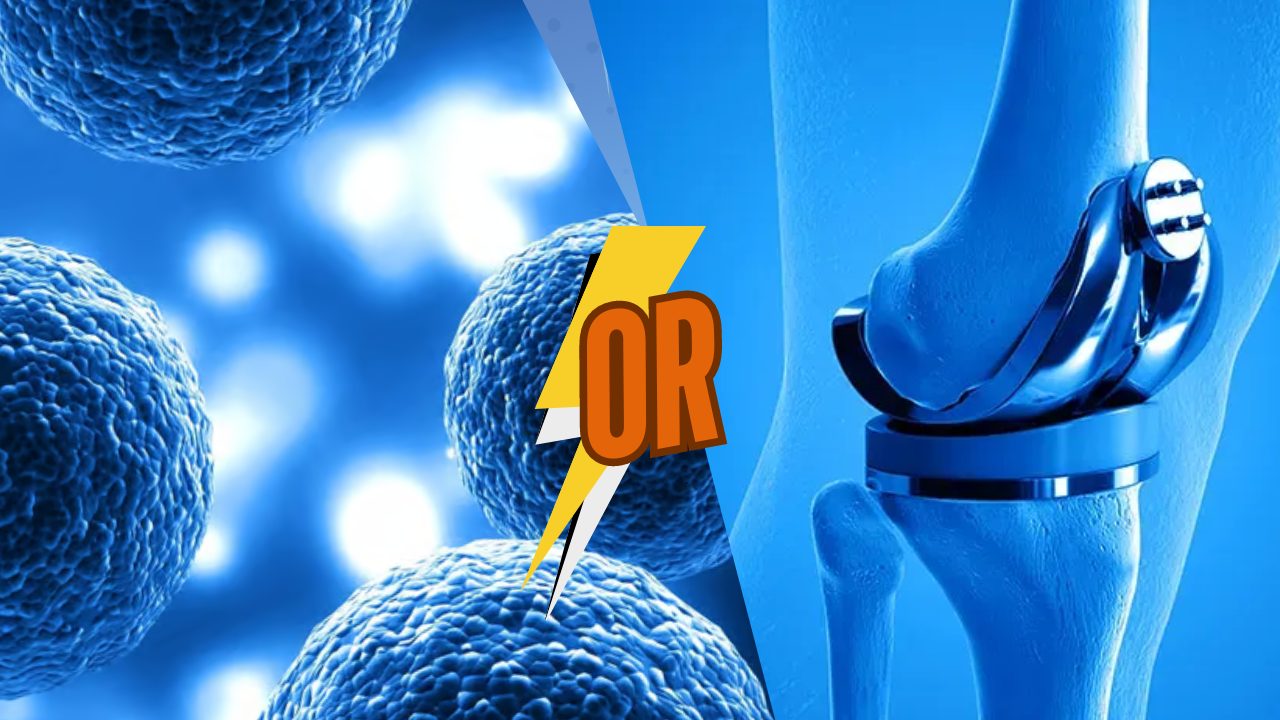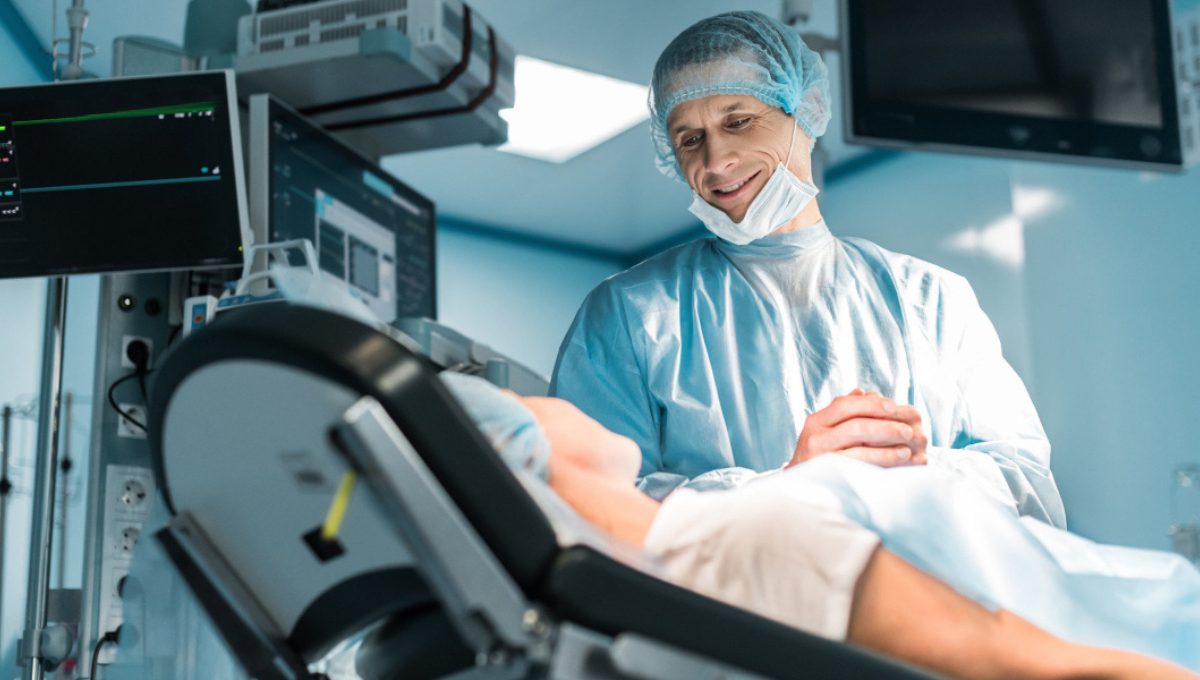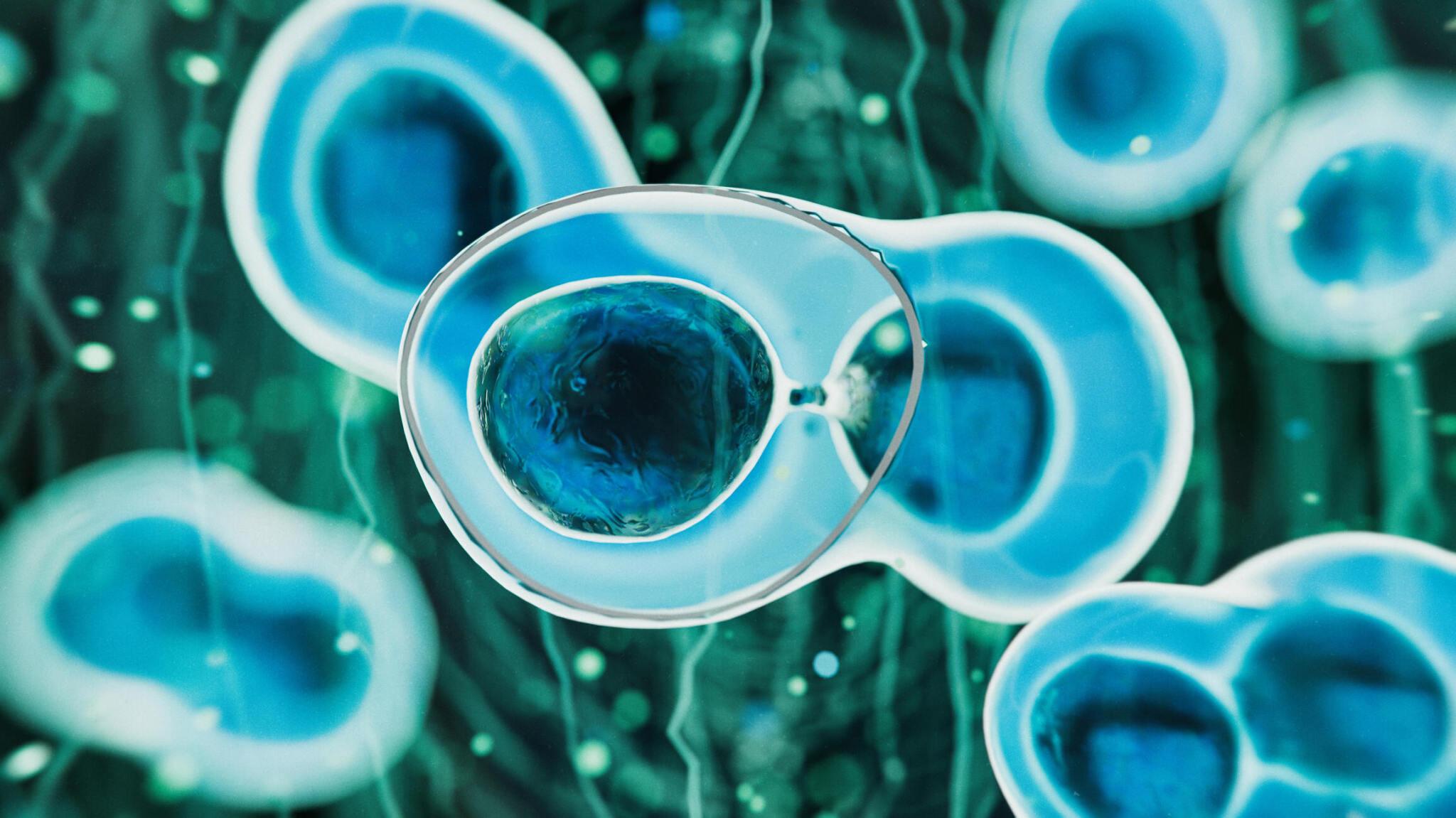Stem Cell Treatment or Knee Replacement Surgery: A Comprehensive Guide
Knee pain, whether due to injury, arthritis, or wear and tear, is a common affliction that affects millions of people globally. Traditionally, knee replacement surgery has been the go-to solution for severe knee issues. However, recent advancements in medical science have introduced an alternative: stem cell therapy for knee pain. This innovative treatment offers a promising option for those looking to avoid the invasiveness and lengthy recovery associated with surgery. In this blog, we will explore both stem cell therapy and knee replacement surgery, providing a detailed comparison to help you make an informed decision.
Stem cell therapy has gained significant traction in recent years due to its potential to regenerate damaged tissues and alleviate chronic pain. Stem cell therapy for knees uses mesenchymal stem cells (MSCs) derived from Wharton’s Jelly in the umbilical cord. These stem cells have the unique ability to differentiate into various cell types, including cartilage, which makes them ideal for treating knee pain. The Life Altering Stem Cell Therapy Institute, an American-owned and operated facility, specializes in this cutting-edge treatment, offering hope to patients seeking an alternative to traditional knee replacement surgery.
Understanding Stem Cell Therapy for Knee Pain
What is Stem Cell Therapy?
Stem cell therapy involves injecting stem cells into the damaged area to promote healing and regeneration. MSCs are particularly effective because they can transform into different types of cells, aiding in the repair of damaged tissues. This treatment is minimally invasive, often performed on an outpatient basis, and has shown promising results in reducing pain and improving knee function.
How Does It Work?
- Harvesting MSCs: The process begins with the collection of MSCs from Wharton’s Jelly in the umbilical cord. These cells are then processed and prepared for injection.
- Injection: The MSCs are injected directly into the knee joint. This procedure is guided by imaging technology to ensure precision.
- Regeneration: Once injected, the stem cells start working by reducing inflammation and promoting the regeneration of damaged cartilage and tissues.
Read Also: Unlocking the Potential of Stem Cells for Heart Failure and Stroke Recovery
Comparing Stem Cell Therapy and Knee Replacement Surgery
Efficacy
- Stem Cell Therapy: Studies have shown that stem cell treatment for knees can significantly reduce pain and improve joint function. According to a study published in the Journal of Translational Medicine, patients who received stem cell injections reported a 60-70% improvement in pain and mobility within six months.
- Knee Replacement Surgery: Knee replacement surgery is highly effective, with over 90% of patients experiencing significant pain relief and improved function. However, the outcomes depend on several factors, including the patient’s overall health and adherence to post-surgery rehabilitation.
Recovery Time
- Stem Cell Therapy: One of the most significant advantages of stem cell therapy for knee pain is the minimal recovery time. Most patients can resume their normal activities within a few days to weeks, with gradual improvement over time.
- Knee Replacement Surgery: Recovery from knee replacement surgery is more prolonged and can take several months. Patients need to commit to a rigorous rehabilitation program to regain full function.
Risks and Complications
- Stem Cell Therapy: The risks associated with stem cell therapy and treatment for chronic knee pain are relatively low. Since the procedure is minimally invasive, complications such as infection or adverse reactions are rare.
- Knee Replacement Surgery: Knee replacement surgery carries higher risks, including infection, blood clots, and complications from anesthesia. Additionally, there is a risk of the artificial joint wearing out over time, potentially requiring revision surgery.
Cost
- Stem Cell Therapy: The stem cell knee therapy cost can vary widely depending on the clinic and the specific treatment protocol. On average, it ranges from $5,000 to $10,000 per knee.
- Knee Replacement Surgery: The cost of knee replacement surgery is generally higher, ranging from $30,000 to $50,000, including hospital stays, surgery fees, and post-operative care.
Read Also: Advanced Cost-Effective Stem Cell Treatment for Baltimore Patients
Follow-up and Outcomes
Stem Cell Therapy Follow-up
Patients undergoing stem cell therapy for knees typically have follow-up appointments to monitor progress. These may include imaging tests to assess cartilage regeneration and physical assessments to track improvements in mobility and pain levels. The long-term outcomes are promising, with many patients reporting sustained pain relief and improved joint function for several years post-treatment.
Knee Replacement Surgery Follow-up
Follow-up care for knee replacement surgery is more intensive. Patients need regular check-ups to monitor the artificial joint and ensure proper healing. Physical therapy is a crucial component of recovery, often lasting several months. While most patients experience significant improvement, some may require additional surgeries if complications arise or the artificial joint wears out.
Conclusion
Choosing between stem cell therapy and knee replacement surgery depends on various factors, including the severity of knee damage, overall health, and personal preferences. Stem cell therapy offers a less invasive option with quicker recovery and fewer risks, making it an attractive alternative for many patients. The Life Altering Stem Cell Therapy Institute utilizes advanced techniques and MSCs from Wharton’s Jelly to provide effective stem cell treatments for knee pain.
On the other hand, knee replacement surgery remains a highly effective solution for severe cases, with a proven track record of success. However, it requires a more extended recovery period and carries higher risks.
In summary, both treatments have their merits, and the best choice varies from patient to patient. Consulting with a medical professional and considering your specific circumstances is crucial in making the right decision. Whether opting for the innovative stem cell therapy or the traditional knee replacement surgery, advancements in medical science continue to offer hope and improved quality of life for those suffering from knee pain.
Is The Process Of Stem Cell Therapy Painful?
Stem cell therapy has gained much attention and interest in the past few decades as a revolutionary approach to treating severe medical conditions and injuries. This path breaking avenue to disease treatment and symptom management offers promising hope to patients with chronic conditions like autoimmune diseases, neurologic disorders, heart problems, infertility issues, and more.
Stem cells’ distinctive properties are utilized in therapy to regenerate or repair damaged tissue and support natural healing. But one question frequently arises and bothers most patients before getting stem cell treatments: whether the process is painful.
This article will explore stem cell therapy basics and discuss what patients can expect during the treatment.
Understanding The Fundamentals Of Stem Cell Therapy
Before grasping the pain aspects and other details of the treatment process, you must understand stem cell therapy by learning the basics behind this groundbreaking regenerative medicine and how it works.
Stem cells are special undifferentiated cells found in the human body, possessing the distinct capabilities to differentiate and transform into any cell type. Cells can be sourced from various body parts like bone marrow, fat or adipose tissue, hip bone, early-stage embryos, and umbilical cord tissue.
Stem cell therapy involves using cells’ unique properties to promote tissue repair and regeneration, which can be used to treat a range of chronic medical conditions.
Read Also: 7 Common Questions By Patients Before First Stem Cell Therapy
How are stem cells harvested?
Cell-based treatment involves harvesting stem cells from the patient’s body or a donor and injecting them into the diseased area requiring treatment.
The pain level experienced while harvesting stem cells depends on the sources and methods used for collection. So, let’s get a clearer picture of the cell harvesting process.
- Bone Marrow – Stem cell extraction from the bone marrow is a somewhat painful experience because it requires inserting a needle into the pelvic bone to collect the stem cells. Most clinics prefer to avoid using this technique because the process is painful and uncomfortable, and fewer cells can be extracted.
- Adipose or Fat Tissue – A relatively less painful and easy process of stem cell collection and harvesting. Fat cells are obtained from the donor’s or patient’s body through a small liposuction process.
- Umbilical Cord Tissue (UCT) – Mesenchymal stem cells are obtained from umbilical cord tissue from donor sources and don’t cause discomfort during extraction. Following healthy births, the cells are isolated from newborn babies’ umbilical cord tissue (Wharton’s Jelly).
Most stem cell therapy clinics use mesenchymal stem cells of UCTs because they are young cells with high proliferation capacity and multilineage differentiation potential. They can differentiate and develop into any cell type, thus repairing and regenerating tissues in the damaged areas.
Methods of Stem Cell Administration and Pain Associated With Them
Stem cell delivery into the patient’s body can be done through various routes, the most widespread of which is intravenous infusion.
Intravenous delivery
Intravenous infusions are painless, similar to a standard IV procedure. Healthy stem cells are slowly infused into the bloodstream via IV drip. The cells are administered by inserting a thin needle into the blood vein. The method is generally painless and requires one to two hours to complete.
Stem cell injection
In some instances, such as knee pain or shoulder injury, the cells are injected into the affected areas. The pain is mild, as patients might have a slight needle prick or burning sensation at the site of the injection.
Intrathecal (lumbar puncture) procedure
The method allows targeted delivery into the cerebrospinal fluid to reach the central nervous system. Intrathecal administration is mainly used in treating neurodegenerative diseases such as spinal muscular atrophy, multiple sclerosis, Parkinson’s disease, etc. Patients might experience pain at the insertion site, so doctors may use local anesthetics to eliminate pain and discomfort.
It is essential to understand that the pain thresholds of individuals vary. For some, the pain might seem minimal, while others may find the process extremely painful. Hence, every patient must communicate their level of pain tolerance with the medical professionals to ensure adequate pain management measures are implemented during the procedure.
Read Also: Is Stem Cell Therapy A Cure For Neurodegenerative Diseases?
Pain Management Techniques During Stem Cell Treatment
Stem cell therapy centers and healthcare providers understand the pain associated with stem cell therapy and the patient’s concerns. To eliminate pain, doctors might follow any of the pain management strategies below.
- Local Anesthesia – For processes like intrathecal administration involving needle insertion, local anesthetics are used to numb the area so the patient doesn’t feel pain or discomfort.
- Pain-relief Medications – When doctors feel a patient’s pain tolerance is low, they can suggest pain medications before or after the procedure to mitigate the pain.
- Cryotherapy – Cold therapy is also used to provide relief to patients. Applying ice packs on the site of injection helps reduce pain and swelling post-treatment.
Contact Life Altering Stem Cell Therapy Institute For A Safe And Comfortable Experience
At Life Altering Stem Cell Therapy Institute, we prioritize patient’s comfort and safety. Our healthcare professionals aim to give our patients a smooth and painless journey of stem cell therapy. We take necessary pain management measures to mitigate pain and ensure comfort.
As a well-established stem cell center in Mexico, we have made great strides in transforming the lives of thousands with our cutting-edge, high-quality stem cell treatments. Connect with our stem cell specialist, Doctor Josemaria Torres Farber, to learn about the stem cell administration process and determine whether you are an eligible candidate.
Summary
Stem cell therapy has emerged as a novel therapeutic approach that utilizes the body’s natural healing potential to treat chronic diseases. Using stem cells promotes the healing and regeneration of damaged tissues, potentially evading invasive and expensive surgeries and long-term medications.
Cell-based therapy is a rising avenue for medical treatment, offering hope to millions worldwide. But when it comes to pain, most patients get afraid and cannot decide whether to go for the treatment.
I hope this article is successful in explaining the kind of experience you can expect from the treatment. The level of discomfort and pain varies from person to person, depending on the method of administration and the individual’s pain threshold. However, it can be ascertained that the pain is minimal and tolerable. If a patient feels pain, medications are administered to provide comfort.
Contact the best stem cell therapy hospital in Mexico for a painless and comfortable stem cell therapy experience.
Can Stem Cell Therapy Help With Rheumatoid Arthritis?
There is a lot of debate and discussion among medical researchers regarding stem cells and their medicinal applications. It is considered helpful for patients suffering from chronic diseases. Many doctors worldwide already use stem cells for treating Rheumatoid arthritis, an autoimmune condition impacting the lives of nearly 54 million individuals in the United States and is the reason for persistent joint pain and inflammation.
Stem cell therapy helps manage chronic pain and slows down the progression of Rheumatoid Arthritis, improving patients’ overall health. This blog post is a comprehensive guide to stem cell therapy for Rheumatoid Arthritis and how it works to relieve arthritis pain.
Why are stem cells used in treating Rheumatoid Arthritis?
Rheumatoid Arthritis (RA) is a chronic inflammatory disorder where the body’s immune system starts attacking its healthy tissues instead of protecting the body from foreign invaders and infections. In RA, the most affected areas are joints in the hands and feet, resulting in inflammation, pain, stiffness, swelling, and loss of function.
Although pain-relief medications are available for treating RA, the results are insufficient in the sense they only provide temporary relief. Therefore, introducing stem cells in medical science has brought new hopes to patients. Stem cell therapy is one of the pathbreaking advancements that showed great promise in alleviating the symptoms of Rheumatoid Arthritis.
Now, the question is, “What is so special about stem cells?” Stem cells are undifferentiated cells in the human body, capable of dividing and duplicating themselves. They can differentiate into any particular cell type, such as cartilage, bone, or nerve cell. Stem cell experts and advocates believe that when the cells are delivered into affected areas, they transform to meet the body’s specific needs.
Where do the stem cells come from?
Stem cells can be isolated from various sources, such as bone marrow, fat or adipose tissues, hip bone, and umbilical cord tissue. Because of their high proliferation capacity and multipotency, mesenchymal stem cells derived from umbilical cord tissue are the most common cell type used in treating rheumatoid arthritis
The process of stem cell collection is termed harvesting. After extracting cells from their sources, they are concentrated and processed in a clinical laboratory to prepare stem cell injections.
Read Also: Healing Power Of Stem Cell Therapy: A Comprehensive Guide
Who can receive stem cell therapy for Rheumatoid Arthritis?
There are no specific professional guidelines on who can or cannot receive stem cells. The decision rests on the doctors and medical professionals in charge of the treatment.
To ensure the safety of the patients, most doctors consider specific criteria before recommending cell-based therapies to their patients. For instance, they will check your age and weight and other health vitals to see whether you are physically fit for the treatment.
They may also assess your medical history, the severity of the RA symptoms, and the extent of joint damage before giving you a green signal for receiving stem cells.
Healing Mechanism of Stem Cells For Treating RA
With their unique regenerative power, stem cells promote the repair or replacement of damaged tissues in the affected joints. Most often, stem cells are administered to the patient’s body via intravenous infusions. The cells travel through the bloodstream to reach the target areas and start healing.
Rheumatoid Arthritis leads to joint degeneration due to damage or loss of cartilage tissues, bone erosion, and joint deformity. The critical goal of stem cell therapy is to reverse the damage by stimulating the production of healthy cartilage tissues and restoring joint function and mobility.
Regenerative treatment approaches like stem cell-based therapy address Rheumatoid Arthritis by targeting the root cause. Stem cells have immunomodulatory agents that regulate the immune system, preventing the self-immunological attack on its tissues.
The injected stem cells differentiate and form cartilage cells to replace the damaged tissues and aid in developing healthy cartilage. They release growth factors and cytokines that slow cartilage degeneration and prevent further loss or damage. Moreover, stem cells’ anti-inflammatory properties suppress inflammation in the joints and decrease pain.
Benefits of stem cell treatment for Rheumatoid Arthritis
Medical research and studies suggest that using mesenchymal stem cells might be beneficial in addressing the underlying mechanisms causing Rheumatoid Arthritis. Let’s see how this innovative regenerative approach aids in treating RA.
- Tissue Regeneration – RA is a degenerative disorder, and stem cell therapy could potentially reverse the damage caused to the cartilage tissues in the joints and regenerate new tissues. When MSCs reach the target areas, they signal other cells to stimulate the body’s innate healing process to renew functional cartilage-developing cells.
- Symptom Relief – Results of a clinical trial on 40 RA patients published on Stem Cells Translational Medicine in 2016 showed significant improvements in their symptoms and joint condition after the therapy.
- Immune Modulation – Stem cells help restore the immune system response and prevent its attack on the healthy body tissues with the increase in levels of T cells. It reduces pain, swelling, and inflammation by regulating the inflammatory response in the affected joints.
- Safety – Cell-based regenerative therapies are reported safe in most studies with no long-term side effects. However, there might be mild side effects after receiving stem cells, like nausea or headache, which is very common and nothing to worry about.
Related Read: Effectiveness and Safety Of Stem Cell Therapy For Arthritis
Why Are Stem Cells Better Than Traditional Treatments?
Stem cell therapy offers several advantages over conventional treatments, so most patients suffering from Rheumatoid Arthritis are considering this regenerative treatment approach.
- Stem cell infusions are minimally invasive, painless, and relatively quick.
- The recovery period is brief, and patients can be up and walking after one to two days.
- There are no side effects of stem cell therapy, unlike pain-relief medications.
- Stem cells have minimal rejection risk because the treatment harnesses your cells or young umbilical cord tissue cells.
How to know If I am fit for stem cell therapy?
The best way to know whether you are the right candidate for stem cell treatment is to speak to your healthcare professional or contact a specialist at a stem cell therapy clinic.
The concerned doctor will assess your current symptoms, medical history, and overall health before determining your eligibility for treatment. You can fill up this patient application form to find your if you are a fit candidate.
Stem Cell Center in Mexico
Mexico has been a famous destination for medical tourism, especially when it comes to stem cell therapy. The cutting-edge technology, robust healthcare system, affordable treatments, and presence of skilled and qualified healthcare professionals make Mexico the leading stop for cellular therapies. Hence, it is no surprise that Mexico has some renowned stem cell clinics.
Life Altering Stem Cell Therapy Institute is a name you can always rely on if you are in Mexico or considering coming to the country for stem cell therapy. Being a recognized institute for stem cell therapy in Mexico, we work to provide patients with high-quality treatments in our state-of-the-art facility.
We use stem cells derived from umbilical cord tissue because research indicates that these are young cells with high therapeutic potential compared to other sources. We follow all the highest safety standard protocols in our therapy procedures to ensure the complete safety of the patients.
Concluding Thoughts
Treating Rheumatoid Arthritis is complex because it is an autoimmune disorder resulting in the degeneration of cartilage tissue due to an overactive immune response. Medical scientists worldwide evaluated stem cell therapy as the most potent regenerative medicine capable of stimulating the body’s natural healing process and treating various medical conditions.
For Rheumatoid Arthritis treatment, stem cells modulate the immune system response and reduce joint pain by suppressing inflammation. With the help of therapy, patients can experience improved joint function and mobility and enjoy a better quality of life.
To know more about stem cells, their therapeutic effects in treating Rheumatoid Arthritis, and the cost of stem cell therapy in Mexico, please schedule a consultation with our medical experts.
Stem Cell Treatment: Recent Advancements And New Applications
Stem cell research has brought hope for patients to cure diseases once thought to be very hard to treat or incurable. As studies on stem cells continue to advance, new developments and applications emerge, opening promising avenues for treating various medical conditions and disorders. The inherent capacity of stem cells to regenerate tissues and stimulate self-healing mechanisms has led medical researchers and clinicians to discover more about stem-cell-based therapies and learn how this regenerative medicine revolutionizes treatment.
This blog post will explore the possibilities and advancements of stem cell therapy by delving deep into recent advancements and providing insights into the prospects of stem cell treatments.
Stem Cell Research
Stem cell research encompasses a broad spectrum of study of stem cells, their types, understanding the cell differentiation mechanisms, therapeutic effects, and potential applications in treating various diseases. Researchers involved in stem cell biology and medicinal applications conduct clinical trials and studies to understand the effectiveness of cell-based therapy in curing diseases.
Translational research is integral to stem cell research because it determines whether the laboratory findings and conclusions apply to clinical applications. Scientists first perform experiments on animal models to test the efficacy and safety of stem cell therapy before proceeding to clinical trials on human subjects. These clinical trials help them determine stem cells’ therapeutic potential while ensuring complete protection of the patients.
Types of Human Stem Cells Used in The Treatment
Stem cells are classified into three types based on their sources and differentiation potential.
Embryonic stem cells – These cells are collected from embryos in their early stages of development. Also known as early-stage embryonic stem cells, they are found in the inner cell mass of a blastocyst before implantation. These are pluripotent stem cells, which makes them capable of developing into specialized cells, tissues and organs.
Adult stem cells – Adult stem cells are present in every human body and can repair and regenerate tissues in the areas they reside. They are multipotent stem cells with limited capabilities to differentiate into limited and specific cell types. Adult stem cells are mainly collected from an adult donor or patient’s bone marrow or adipose tissue (fat).
Umbilical cord stem cells – Mesenchymal stem cells are also isolated from the human umbilical cord tissues (Wharton’s Jelly) after healthy births of newborn babies. These pluripotent cells have a high proliferation capacity and can differentiate into any cell type. Human umbilical cord tissue-derived mesenchymal stem cells (HUCT-MSCs) have extraordinary therapeutic potential. Hence, they are used to treat of chronic diseases like autoimmune conditions, neurodegenerative disorders, pulmonary disorders, cardiac diseases, etc.
Induced pluripotent stem cells – Adult cells genetically reprogrammed in the laboratory to resemble the characteristics of embryonic stem cells or HUCT-MSCs. These cells are also used in regenerative medicine treatment.
Read Also: Healing Power Of Stem Cell Therapy: A Comprehensive Guide
Recent Developments In Stem Cell Therapies
The last two decades have witnessed rapid technological advances in regenerative medicine, which has led to the widespread use and adoption of cell-based therapies for many diseases. Stem cells have shown the potential to replace traditional treatment approaches, such as medications and surgeries, with their immunomodulatory and anti-inflammatory properties.
Let’s get into the details of the advances made in stem cells and their progress towards clinical applications.
Immune Defense
Stem cell research is focused on T cell immunology, revealing a remarkable insight. Stem cells can stimulate the growth of cytotoxic T lymphocytes, an immune cell that protects the body against virus-infected foreign cells and cancer cells. Scientists rely more on stem cell therapy to fight against viral infections and malignant growth in the body.
Disease Modeling
Stem cells are used for disease modelling to explore new disease treatment approaches. It is an invaluable asset for researchers because it assists them in regenerative medicine development by having a closer look into the cellular and molecular processes. Disease modeling using stem cells led to the discovery of more effective and safe therapies for chronic conditions like diabetes, orthopedic conditions, autoimmune diseases, and more.
Tissue Engineering
Stem cell research revolutionizes the process of tissue engineering by supplying an abundant source of multipotent or pluripotent cells that can form tissues or organs. Examples of tissue engineered with the help of stem cells are blood cells, heart muscle cells, cartilage, skin cells, etc.
Therapeutic Applications Of Stem Cell Therapy
Mesenchymal stem cells, mainly obtained from umbilical cord tissue, have zero risks of immune rejection. Additionally, they have been explored extensively, resulting in a pool of knowledge on their therapeutic properties and potential medical applications.
- Neurological Disorders – Neurological diseases are one of the critical public health challenges that stem cell treatment addresses. Umbilical cord mesenchymal stem cell therapy appears to be a promising approach to neurodegenerative disorders like Multiple Sclerosis, Parkinson’s disease, stroke, and Alzheimer’s disease. Notably, renewed research efforts are made to find more treatment solutions for neurological patients due to their easy isolation and multilineage differentiation potential.
- Cardiovascular repair – HUCT-MSCs have the potential for cardiac regeneration, paving the path for novel cardiovascular disease therapies and myocardial infarction (heart attack). These cells repair damaged heart tissues, restoring heart function and improving overall health.
- Musculoskeletal regeneration – Adult stem cells have shown promise in regenerating cartilage tissues, bones and tendons, potentially alleviating pain and inflammation in patients with arthritis, injuries, and other orthopedic conditions.
- Anti-aging treatment – Research on adult stem cells indicates their promising potential in reversing or slowing down the process of aging, offering hope to millions of individuals suffering from the problem of premature aging.
- Autoimmune diseases – Stem cell therapy is considered a well-established treatment for autoimmune diseases like Multiple Sclerosis, Psoriasis, Rheumatoid Arthritis, Lupus, Type 1 diabetes, Parkinson’s disease,
- Post-cancer treatment – Stem cell treatment helps cancer survivors combat the prolonged effects of cancer after treatment, leading to healthy living. The administration of healthy stem cells replaces the diseased or cancer cells and expedites the healing process by stimulating the growth of new healthy cells.
Future Prospects Of Stem Cell Therapy
In recent years, the progress of stem cell research has been remarkable, marked by significant strides in shaping the future of regenerative medicine and promising avenues ahead for stem cell research.
The scope of treating diseases with stem cells goes beyond the mentioned applications. Recent research has explored utilizing pluripotent stem cells to produce diverse cell types, manipulating genes to enhance cellular regeneration, and creating sophisticated animal models for testing new therapies.
Read Also: Can Stem Cell Therapy Provide Relief From Chronic Knee Pain?
Which Country Is Best For Stem Cell Treatment?
With the evolution of medical tourism, patients now have better opportunities to access advanced treatments and personalized care in other countries. Stem cell treatment is no exception to this! Mexico is one such country with a high concentration of experienced and qualified stem cell specialists that stands out in superior treatment and holistic care. Other factors that make stem cell therapy in Mexico the best in the world are its advanced healthcare facilities, access to leading-edge research, state-of-the-art equipment and infrastructure.
Furthermore, stem cell therapy in Mexico cost is reasonable, making it suitable for every type of family to afford the treatment. The country’s growing reputation in regenerative medicine has made it the most preferred destination for cost-effective stem cell treatments. It is considered an emerging hub for medical tourism because of its advanced technology and the efficiency of the stem cell centers in Mexico.
Life Altering Stem Cell Therapy Institute is the best place to reach for those seeking stem cell-based therapies abroad. Their strong emphasis on using cutting-edge and safe treatments ensures that you have an exceptional stem cell therapy experience.
Conclusion
After shedding light on the potential applications and the manifold benefits stem cell therapy offers, there is no denying that it is a novel hope for patients with debilitating diseases. Also, the future is undeniably promising, with significant advancements in tissue reengineering, cell regeneration, and treatment of life-threatening diseases on the horizon.
As the medical field continues to explore the potential of stem cells, it is evident that the research results will be revolutionary and far-reaching, potentially enhancing the lives of countless individuals worldwide.




